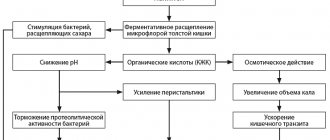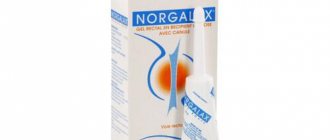Write a review
Reviews: 0
Manufacturers: Suzhou Lixin Pharmaceutical Co. (China), Nanyang Pukang Pharmaceutical Co., North China Pharmaceutical
Active ingredients
- Lincomycin
Disease class
- Suppurative otitis media, unspecified
- Acute lower respiratory tract respiratory infection, unspecified
- Pneumonitis caused by food and vomit
- Abscess of the lung and mediastinum
- Pyothorax
- Skin abscess, boil and carbuncle
- Phlegmon
- Local infection of skin and subcutaneous tissue, unspecified
- Pyogenic arthritis
- Osteomyelitis
- Erysipelas
- Staphylococcal infection, unspecified
- Streptococcal infection, unspecified
- Post-traumatic wound infection, not elsewhere classified
Clinical and pharmacological group
- Not indicated. See instructions
Pharmacological action
- Antibacterial
Pharmacological group
- Lincosamides
pharmachologic effect
Lincomycin hydrochloride is an antibiotic from the lincosamide group. When using therapeutic doses of this drug, it has a bacteriostatic effect on the body. The use of higher concentrations of the active substance provides a bactericidal effect. The antibiotic suppresses the processes of protein synthesis in the cells of pathogenic microorganisms. Basically, the active ingredient demonstrates activity against gram-positive bacteria. Most gram-negative bacteria, viruses, fungi, and protozoa are resistant to lincomycin. Resistance develops relatively slowly.
There is cross-resistance of microflora to clindamycin, lincomycin, as well as other antibacterial agents that belong to the lincosamide group.
Indications for use:
Bacterial infections caused by microorganisms sensitive to lincomycin (primarily Staphylococcus spp.
and
Streptococcus spp.
, especially microorganisms resistant to penicillins, as well as allergies to penicillins): sepsis, subacute septic endocarditis, lung abscess, pleural empyema, pleurisy, otitis, osteomyelitis (acute and chronic), purulent arthritis, postoperative purulent complications, wound infection, infections skin and soft tissues (pyoderma, furunculosis, phlegmon, erysipelas).
Pharmacokinetics and pharmacodynamics
The active substance is well absorbed from the gastrointestinal tract, its highest concentration in the blood is observed 0.5-1 hour after intramuscular administration. 72% bound to blood proteins. Penetrates the placenta and is detected in breast milk. Does not pass through the blood-brain barrier well. The substance is partially metabolized in the liver. Its half-life is approximately 5 hours. It is excreted from the body both unchanged and as metabolites.
It is excreted from the body through the kidneys, as well as with feces and bile. After intramuscular administration, the therapeutic concentration in the blood of lincomycin is maintained for 17-20 hours; if the drug is administered intravenously, then for 14 hours.
Side effects
During treatment with the drug, the following side effects may occur:
- Digestive system: diarrhea , vomiting, nausea, abdominal pain, stomatitis, glossitis.
- Hematopoietic system: neutropenia, reversible leukopenia, thrombocytopenia.
- Allergic manifestations: dermatitis , urticaria , anaphylactic shock , Quincke's edema .
- Candidiasis.
phlebitis may occur as a local reaction .
In the case of rapid intravenous administration, the patient may experience a decrease in blood pressure, general weakness and dizziness, and relaxation of the skeletal muscles.
Long-term treatment with large doses of the drug can lead to the manifestation of pseudomembranous colitis .
Instructions for use (Method and dosage)
If the patient has been prescribed Lincomycin hydrochloride, the instructions for use during treatment must be followed.
The instructions for Lincomycin hydrochloride in ampoules provide for the possibility of intravenous and intramuscular administration of the drug.
When the drug is prescribed intramuscularly, adult patients receive 600 mg per day, administered 1-2 times.
Intravenous drip administration is practiced, with 600 mg of the drug dissolved in 250 ml of glucose or isotonic sodium chloride solution, administration can be carried out 2-3 times a day.
Children who are already 1 month old and who develop severe infectious diseases are prescribed intramuscular administration of the drug; the dosage is determined as follows: per 1 kg of body weight, 10 mg of the drug. The drug is administered every 12 hours. Intravenous administration is possible, the dose is 10-20 mg/kg per day.
Release form:
Capsules 250 mg.
5 or 10 capsules in a blister pack made of polyvinyl chloride film and printed varnished aluminum foil.
20 capsules in polymer jars made of high-density polyethylene with screw-on lids (top layer of high-density polyethylene, inner layer of low-density polyethylene).
Each jar, 2 or 4 blister packs of 5 capsules each, or 1 or 2 blister packs of 10 capsules each, along with instructions for use, is placed in a cardboard pack.
Interaction
If the drug is treated simultaneously with cephalosporins , penicillins , chloramphenicol , erythromycin , antagonism of the antimicrobial effect may be observed.
Simultaneous administration with aminoglycosides may provoke synergistic action.
If Lincomycin Hydrochloride is taken at the same time and drugs for inhalation anesthesia or peripherally acting muscle relaxants are used, neuromuscular blockade may increase, and apnea .
With simultaneous treatment with antidiarrheals, a decrease in the effect of lincomycin is observed.
The product is incompatible with barbiturates , ampicillin , calcium gluconate , heparin , theophylline , magnesium sulfate .
Novobiocin and Kanamycin should not be combined in one syringe or dropper .
Lyncomycin hydrochloride powder substance
Instructions for medical use of the drug
Description of pharmacological action
Suppresses bacterial protein synthesis due to reversible binding to the 50S ribosomal subunit and disrupts the formation of peptide bonds. Effective against gram-positive microorganisms (Staphylococcus spp., Streptococcus spp., including Streptococcus pneumoniae, Corynebacterium diphtheriae), some anaerobic spore-forming bacteria (Clostridium spp.) and gram-negative anaerobes (Bacteroides spp., Mycoplasma spp.). Acts on microorganisms (especially Staphylococcus spp.) resistant to other antibiotics. Enterococcus spp. are not sensitive to lincomycin. (including Enterococcus faecalis), gram-negative microorganisms, fungi, viruses, protozoa. Inferior to erythromycin in activity against spore-forming anaerobes, Neisseria spp., Corynebacterium spp. Resistance develops slowly. Cross-resistance exists between lincomycin and clindamycin. In therapeutic doses it has a bacteriostatic effect, in higher doses and against highly sensitive microorganisms it has a bactericidal effect.
Indications for use
Severe infectious and inflammatory diseases caused by sensitive microorganisms (primarily staphylococci and streptococci, especially microorganisms resistant to penicillins, as well as allergies to penicillins): lower respiratory tract infections (including aspiration pneumonia, lung abscess, pleural empyema ), otitis, infections of bones and joints (acute and chronic osteomyelitis, purulent arthritis), purulent infections of the skin and soft tissues (pyoderma, furunculosis, cellulitis, erysipelas, wound infection).
Release form
substance-powder 25 billion IU; polyethylene bag (bag); powder substance; two-layer polyethylene bag (bag) 5 kg cardboard drum 1; powder substance; two-layer polyethylene bag (bag) 10 kg cardboard drum 1; powder substance; two-layer polyethylene bag (bag) 15 kg cardboard drum 1; powder substance; two-layer polyethylene bag (bag) 20 kg cardboard drum 1; powder substance; two-layer polyethylene bag (bag) 25 kg cardboard drum 1; powder substance; two-layer polyethylene bag (bag) 30 kg cardboard drum 1; powder substance; two-layer polyethylene bag (bag) 40 kg cardboard drum 1; powder substance; two-layer polyethylene bag (bag) 50 kg cardboard drum 1; sterile powder substance; two-layer polyethylene bag (bag) 25 kg plastic drum 1; sterile powder substance; two-layer polyethylene bag (bag) 25 kg cardboard drum 1; sterile powder substance; two-layer polyethylene bag (bag) 25 kg fiber drum 1; sterile powder substance; two-layer polyethylene bag (bag) 25 kg cardboard box (box) 1;
Pharmacodynamics
In therapeutic doses it acts bacteriostatically. At higher concentrations it has a bactericidal effect. Suppresses protein synthesis in microbial cells. Active primarily against gram-positive bacteria: aerobic Staphylococcus spp. (including those producing penicillinase); Streptococcus spp., incl. Streptococcus pneumoniae (except Enterococcus faecalis), Corynebacterium diphtheriae; anaerobic spore-forming bacteria Clostridium spp. Lincomycin is also active against gram-negative anaerobic bacteria: Bacteroides spp., Mycoplasma spp. Most gram-negative bacteria, fungi, viruses, and protozoa are insensitive to lincomycin. Resilience is developed slowly. Cross-resistance exists between lincomycin and clindamycin.
Pharmacokinetics
After oral administration, 30–40% is absorbed from the gastrointestinal tract. Eating slows down the rate and extent of absorption. Lincomycin is widely distributed in tissues (including bone) and body fluids. Penetrates through the placenta. Partially metabolized in the liver. T1/2 - about 5 hours. It is excreted unchanged and in the form of metabolites in urine, bile and feces.
Use during pregnancy
Lincomycin crosses the placenta and is excreted in breast milk. Use during pregnancy is contraindicated. If it is necessary to use it during lactation, the issue of stopping breastfeeding should be decided.
Contraindications for use
- hypersensitivity to lincomycin and clindamycin; - severe dysfunction of the liver and/or kidneys; - pregnancy; - lactation (breastfeeding);
Side effects
From the digestive system: nausea, vomiting, epigastric pain, diarrhea, glossitis, stomatitis; transient increase in the level of liver transaminases and bilirubin in the blood plasma; with long-term use in high doses, the development of pseudomembranous colitis is possible. From the hematopoietic system: reversible leukopenia, neutropenia, thrombocytopenia. Allergic reactions: urticaria, exfoliative dermatitis, Quincke's edema, anaphylactic shock. Effects due to chemotherapy: candidiasis.
Directions for use and doses
The dosage regimen is determined individually depending on the indications. For adults, a single dose when taken orally - 0.5 g, daily - 1.5-2 g. Children aged 1 month to 14 years orally - at a daily dose of 30-60 mg/kg body weight (in 2-3 doses at intervals of 8–12 hours).
Overdose
Cases of acute overdose of the drug have not been described. With long-term use of the drug, especially in high doses, the development of candidal infection and pseudomembranous colitis is possible. If pseudomembranous colitis develops, lincomycin therapy should be discontinued.
Interactions with other drugs
When used simultaneously with penicillins, cephalosporins, chloramphenicol or erythromycin, antagonism of the antimicrobial effect is possible. When used simultaneously with inhalation anesthesia or peripherally acting muscle relaxants, an increase in neuromuscular blockade is observed, up to the development of apnea.
Special instructions for use
If liver and/or kidney function is impaired, the single dose of lincomycin should be reduced by 1/3–1/2 and the interval between doses should be increased. With long-term use of the drug, systematic monitoring of renal and liver function is necessary. If pseudomembranous colitis develops, lincomycin should be discontinued and vancomycin or bacitracin should be prescribed.
Storage conditions
List B.: In a place protected from light, at a temperature of 5–25 °C.
Best before date
36 months
ATX classification:
J Antimicrobials for systemic use
J01 Antimicrobials for systemic use
J01F Macrolides and lincosamides
J01FF Lincosamides
J01FF02 Lincomycin
special instructions
If the patient has impaired liver or kidney function, the dosage should be reduced or the period between administration of the drug should be increased. If the drug is used for a long period, it is necessary to systematically monitor the functions of the liver, kidneys, as well as laboratory blood parameters.
The drug is prescribed with caution for the treatment of people with a tendency to allergies, patients with colitis , bronchial asthma , as well as those with a history of gastrointestinal diseases.
If the patient develops pseudomembranous colitis , it is necessary to stop taking the drug.


